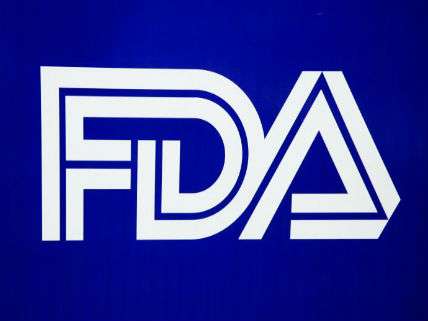Trump and How to Speed Up FDA Regulatory Approvals
Slashing the restraints on the agency's slow and burdensome process.

President Donald Trump described the Food and Drug Administration's drug approval process as "slow and burdensome" in his speech to a joint session of Congress on Tuesday. He observed that the FDA process "keeps too many advances… from reaching those in need." His solution is to "slash the restraints" at the FDA to speed new drugs to the bedsides of patients. To illustrate his criticisms Trump pointed to Megan Crowley in the gallery, a young woman who has survived Pompe disease which is caused by a genetic glitch that prevents her cells from properly processing glycogen. After she and her younger brother was diagnosed with the disease in 1998, her father John Crowley co-founded the biotech company Novazyme to develoop a treatment. Megan and her brother began taking the recombinate enzyme replacement therapy in 2003.
The enzyme treatment was tested on several dozen patients and submitted to the FDA in 2005. The agency took only 9 months to approve the drug in 2006. That may not seem particularly slow and burdensome, but a new Tufts University study reports more typically that getting a new drug from development through the FDA process takes more than a decade and costs about $2.6 billion. As it happens, Crowley is head of Amicus Therapeutics which has developed an enzyme replacement treatment for Fabry Disease. In November, the FDA rejected its initial submission for approval and ordered the company to conduct further clinical trials. Interestingly, the Amicus' new drug was approved by European Union drug regulators in May, 2016.
Another way to think about the development of the Pompe treatment is that it took three years for the drug to get FDA approval after Crowley had begun dosing his children with it. If they had had to wait an extra three years for FDA approval, Megan and her brother might well have succumbed to their illness.
As I have argued, the FDA should be modernized so that new treatments become available to patients once they have made it through the Phase II safety testing. Patients who choose the new treatments would essentially be enrolled in Phase III efficacy trials. This would drastically cut the time and the expense it takes to get new medicines to people.
I am not alone in urging this reform of the drug approval process. In a February 14, 2012 Wall Street Journal op-ed, former FDA Commissioner Andrew von Eschenbach argued that "after proof of concept and safety testing, the [new therapeutic] product could be approved for marketing with every eligible patient entered in a registry so the company and the FDA can establish efficacy through post-market studies." Elsewhere von Eschenbach pointed out this FDA reform would mean that new drugs could …
…come to market after promising early-stage research in targeted patients, with appropriate post-marketing studies required. Payers and patients would be the ultimate judge about the quality of the product, and companies could learn from the experience to develop superior products if needed.
Companies would still be liable for unforeseen side effects, but patients and doctors would be warned -- through the drug's labeling -- that the product had been approved based on promising but provisional research.
Gradually replacing or reducing dependence on Phase 3 trials with smaller, faster adaptive trials and post-market surveillance would have a positive impact on medical innovation and the U.S. economy….
To head the FDA, Trump is reportedly thinking of nominating venture capitalist Jim O'Neill who argued in 2014: "We should reform [the] FDA so there is approving drugs after their sponsors have demonstrated safety—and let people start using them, at their own risk. Let's prove efficacy after they've been legalized." Sounds good to me.


Show Comments (11)